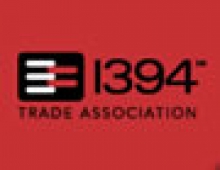
Spreading FireWire: 1394 to run over UWB
The 1394 Trade Association has announced that it will cooperate with the MBOA (Multiband OFDM Alliance) on specifications for wireless 1394 running over the MBOA's flavor of UWB (ultrawideband) technology.
Specifically, the 1394 Trade Association has approved the WiMedia Alliance's MAC Convergence Architecture (WiMCA), which in turn supports the MBOA specs, as a platform for a high-speed, wireless 1394 PAL (protocol adaptation layer).
If all those organization names and acronyms set your head spinning, no one could blame you. The upshot is that the effort should allow wireless 1394 devices based on UWB wireless technology to interoperate with wired 1394 equipment.
The FireWire effort, however, is just one part of a much larger UWB picture. The MBOA, which now boasts more than 170 member companies, is driving the development of a UWB PHY (physical layer) and MAC (media access control) layer. The group recently announced that the PHY is complete and that the MAC should be completed by year's end. As such, the MBOA appears to have more momentum than the UWB Foruma competing group that is starting to look like an also-ran.
MBOA now enjoys support from the 1394 Trade Association, the WiMedia Alliance, and the Wireless USB Promoters Group. The close cooperation of so many groups holds out the promise of a wireless nirvana: A wide range of products, running all manner of protocols, all relying on UWB as a transport mechanism while co-existing and even interoperating. The WiMedia Alliance's WiMCA platform is a key part of the effort because it provides a framework for how various wireless protocols (including USB, 1394, and IP-based protocols) could share access to the UWB radio channel.
Nirvanas, however, have a way of remaining elusive. As Editor-in-Chief Maury Wright has argued, UWB has yet to prove itself outside of lab environments, and incompatible UWB radios in the same space could wreak havoc on each other...
If all those organization names and acronyms set your head spinning, no one could blame you. The upshot is that the effort should allow wireless 1394 devices based on UWB wireless technology to interoperate with wired 1394 equipment.
The FireWire effort, however, is just one part of a much larger UWB picture. The MBOA, which now boasts more than 170 member companies, is driving the development of a UWB PHY (physical layer) and MAC (media access control) layer. The group recently announced that the PHY is complete and that the MAC should be completed by year's end. As such, the MBOA appears to have more momentum than the UWB Foruma competing group that is starting to look like an also-ran.
MBOA now enjoys support from the 1394 Trade Association, the WiMedia Alliance, and the Wireless USB Promoters Group. The close cooperation of so many groups holds out the promise of a wireless nirvana: A wide range of products, running all manner of protocols, all relying on UWB as a transport mechanism while co-existing and even interoperating. The WiMedia Alliance's WiMCA platform is a key part of the effort because it provides a framework for how various wireless protocols (including USB, 1394, and IP-based protocols) could share access to the UWB radio channel.
Nirvanas, however, have a way of remaining elusive. As Editor-in-Chief Maury Wright has argued, UWB has yet to prove itself outside of lab environments, and incompatible UWB radios in the same space could wreak havoc on each other...















